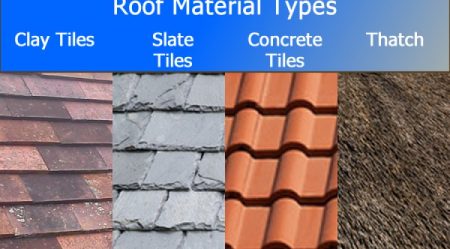Different Types of Roof Coverings
Contents
Different Types of Roof Coverings
When it comes to choosing the right roofing material for your home, there are a variety of options available. Each type of roofing material has its own unique characteristics, advantages, and disadvantages. In this article, we will discuss different types of roof coverings that you can consider for your home.
1. Asphalt Shingles
Asphalt shingles are the most popular and widely used roofing material in North America. They are affordable, easy to install, and come in a variety of colors and styles. However, they have a shorter lifespan compared to other roofing materials and may require more frequent maintenance.
2. Metal Roofing
Metal roofing is becoming increasingly popular due to its durability, energy efficiency, and long lifespan. It is available in a variety of materials such as steel, aluminum, copper, and zinc. Metal roofs are lightweight, fire-resistant, and require little maintenance. However, they can be more expensive than other roofing materials and may be noisy during heavy rain or hailstorms.
3. Clay and Concrete Tiles
Clay and concrete tiles are natural materials that are extremely durable and long-lasting. They are resistant to fire, insects, and rot, and can withstand harsh weather conditions. Additionally, they provide excellent insulation and are environmentally friendly. However, they are heavy, difficult to install, and may require additional structural support.
4. Slate
Slate is a natural stone that is often used on historic or high-end homes. It is extremely durable, fire-resistant, and provides excellent insulation. Slate roofs can last up to 100 years or more and come in varying shades of gray, green, and red. However, they are one of the most expensive roofing materials and require a specialized contractor for installation.
5. Wood Shakes and Shingles
Wood shakes and shingles are a natural and attractive roofing material that can add charm to any home. They are durable, provide good insulation, and come in a variety of colors and textures. However, they require regular maintenance to prevent rot, mold, and insect damage. Additionally, they may not be suitable for areas with a high risk of wildfires.
6. Synthetic Roofing Materials
Synthetic roofing materials such as rubber, plastic, and polymer composites are becoming more popular due to their affordability, durability, and energy efficiency. They are lightweight, easy to install, and can mimic the look of other roofing materials such as slate or wood. However, they may not be as durable as natural materials and can be prone to fading and cracking over time.
In conclusion, choosing the right roofing material for your home depends on various factors such as budget, climate, style, and personal preference. Consider consulting with a professional roofer to determine which type of roof covering is best suited for your needs. With proper installation and maintenance, a quality roof can protect your home for decades to come.
FAQs
- How long do asphalt shingles typically last?
- Asphalt shingles typically last between 15-30 years depending on the quality of the shingles and the climate in which they are installed.
- Are metal roofs noisy during heavy rain or hailstorms?
- Metal roofs can be noisy during heavy rain or hailstorms, but this can be mitigated by using sound-deadening insulation during installation.
- Can clay and concrete tiles be used on all types of roofs?
- No, clay and concrete tiles are heavy and may require additional structural support. They may not be suitable for all types of roofs.
- What is the lifespan of a slate roof?
- A properly installed and maintained slate roof can last up to 100 years or more.
- Are synthetic roofing materials a good alternative to natural materials?
- It depends on your specific needs and budget. Synthetic roofing materials can be affordable, durable, and energy-efficient, but may not have the same aesthetic appeal as natural materials.





